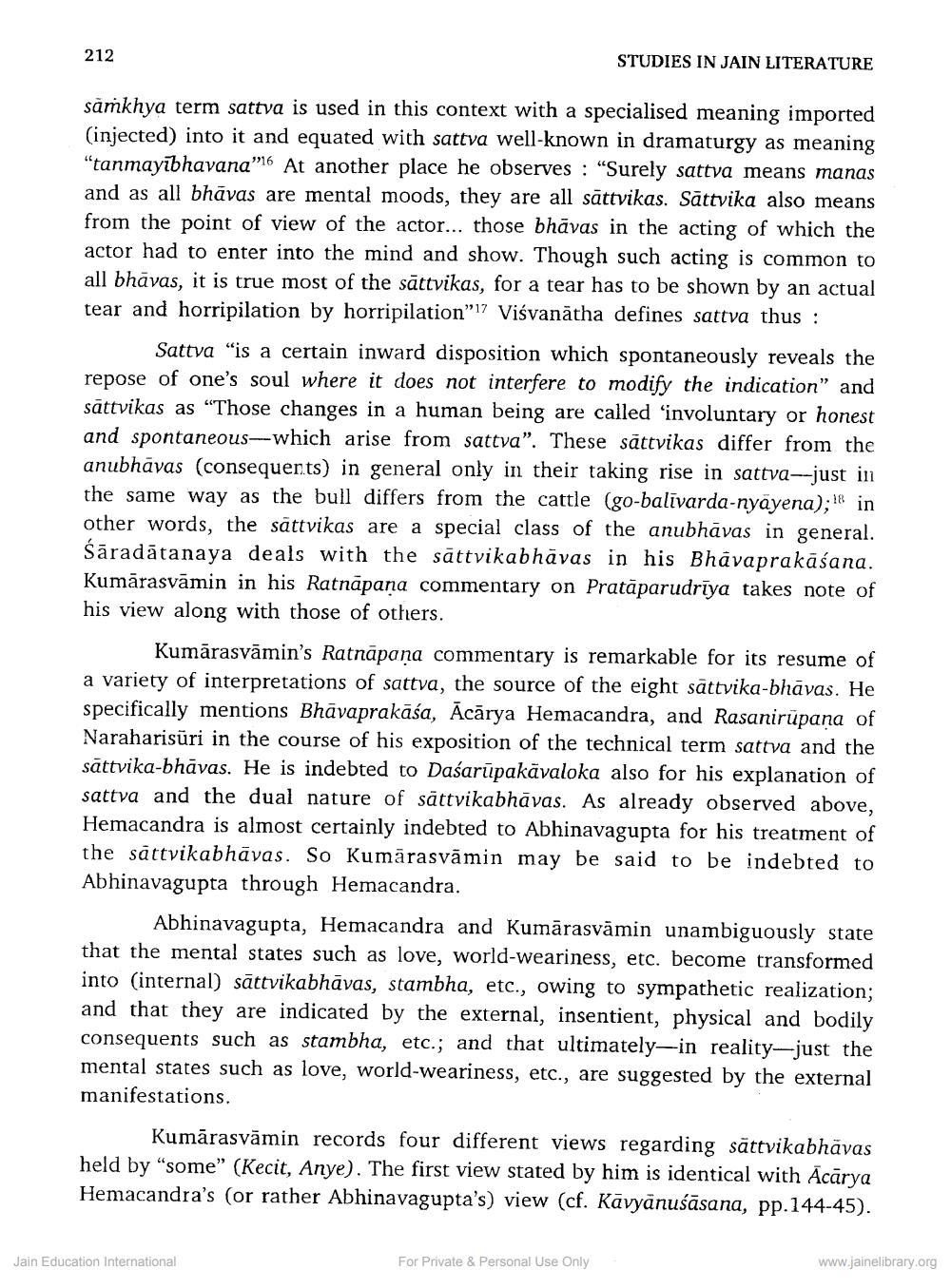________________ 212 STUDIES IN JAIN LITERATURE samkhya term sattva is used in this context with a specialised meaning imported (injected) into it and equated with sattva well-known in dramaturgy as meaning "tanmayibhavana''16 At another place he observes : "Surely sattva means manas and as all bhavas are mental moods, they are all sattvikas. Sattvika also means from the point of view of the actor... those bhavas in the acting of which the actor had to enter into the mind and show. Though such acting is common to all bhavas, it is true most of the sattvikas, for a tear has to be shown by an actual tear and horripilation by horripilation"17 Visvanatha defines sattva thus : Sattva "is a certain inward disposition which spontaneously reveals the repose of one's soul where it does not interfere to modify the indication" and sattvikas as "Those changes in a human being are called 'involuntary or honest and spontaneous-which arise from sattva". These sattvikas differ from the anubhavas (consequents) in general only in their taking rise in sattva-just in the same way as the bull differs from the cattle (go-balivarda-nyayena);!in other words, the sattvikas are a special class of the anubhavas in general. Saradatanaya deals with the sattvikabhavas in his Bhavaprakasana. Kumarasvamin in his Ratnapana commentary on Prataparudriya takes note of his view along with those of others. Kumarasvamin's Ratnapana commentary is remarkable for its resume of a variety of interpretations of sattva, the source of the eight sattvika-bhavas. He specifically mentions Bhavaprakasa, Acarya Hemacandra, and Rasanirupana of Naraharisuri in the course of his exposition of the technical term sattva and the sattvika-bhavas. He is indebted to Dasarupakavaloka also for his explanation of sattva and the dual nature of sattvikabhavas. As already observed above, Hemacandra is almost certainly indebted to Abhinavagupta for his treatment of the sattvikabhavas. So Kumarasvamin may be said to be indebted to Abhinavagupta through Hemacandra. Abhinavagupta, Hemacandra and Kumarasvamin unambiguously state that the mental states such as love, world-weariness, etc. become transformed into (internal) sattvikabhavas, stambha, etc., owing to sympathetic realization; and that they are indicated by the external, insentient, physical and bodily consequents such as stambha, etc.; and that ultimately-in reality-just the mental states such as love, world-weariness, etc., are suggested by the external manifestations. Kumarasvamin records four different views regarding sattvikabhavas held by "some" (Kecit, Anye). The first view stated by him is identical with Acarya Hemacandra's (or rather Abhinavagupta's) view (cf. Kavyanusasana, pp.144-45). For Private & Personal Use Only www.jainelibrary.org Jain Education International




